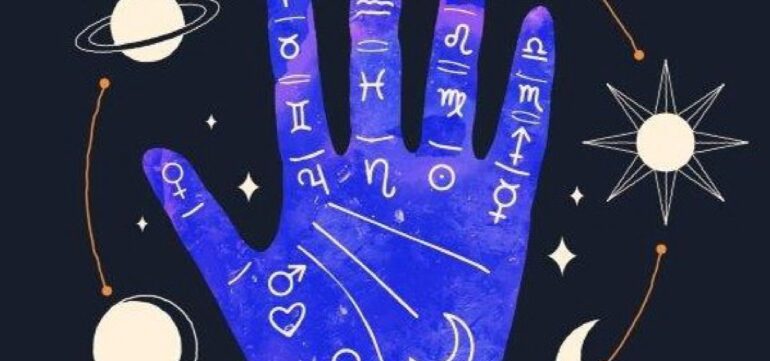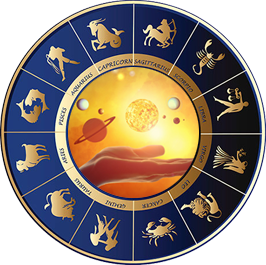
The 12 Vedic signs
Just like in Western astrology, Vedic astrology consists of 12 signs. Nevertheless, while the signs may be the same, the dates are a bit (read: majorly) different. Vedic astrology bases its division of the zodiac on the position of its twelve constellations, “as opposed to the vernal [spring] equinox, which is the reference point in Western astrology. Basically, the two disciplines use totally different calendars. Vedic astrology uses a sidereal system, while Western astrology relies on the tropical order. “This distinction arises because of the phenomenon known as the precession of the equinoxes, where the earth slowly shifts its position,” says Cabral.
The history of Vedic astrology.
The Sanskrit word for Vedic astrology, or Hindu astrology, is jyotiṣa, loosely translating to “light/heavenly body,” and the modality seems to have first appeared in the Rigveda, an ancient Indian text (though some assert it’s been around since 10,000 B.C.).
“Vedic astrology contains within it the rich spiritual traditions and myths of ancient Indian culture,” explains founder of Moondance Vedic Astrology and author of Vedic Astrology for Beginners, Pamela McDonough. “Even today, throughout much of India, Jyotish is an accepted science and, for many, is part of their lifestyle.”


Vastu Shastra origin
The origin of Vastu Shastra evolved during Vedic times in India. The art of Vastu originates in Sthapatyaveda, a part of the Atharvaveda, which emerged as a system of knowledge involving the connection between man and his buildings – in other words – vastu architecture.
Here, It arises to teach the art of living, designing, building in harmony with nature and stimulating positive energy. Sthapatya Veda could be the theory while Vaastu Shastra is the application of this knowledge, the “science of architecture”.
Vedic astrology historyThe 12 Vedic signsVedic vs. Western astrology
We carefully vet all products and services featured on mindbodygreen using our commerce guidelines. Our selections are never influenced by the commissions earned from our links.
If you’re into astrology, you’ve undoubtedly mapped your birth chart, downloaded various apps, and maybe even looked up your astrological compatibility with a love interest. But did you know Western astrology isn’t the only astrological system out there?
The differences between Vedic and Western astrology.
1.
Vedic astrology uses a different calendar.
As McDonough explains, Western astrology bases charts on the “tropical calendar” (which most of the world uses) and the four seasons, while Vedic astrology charts are calculated using something called the sidereal system, which looks at the changing, observable constellations. (Western astrology does not change in the same way and works with the planets’ fixed positions.)
2.
Vedic astrology speaks more to your karma and dharma.
Another interesting distinction is that modern Western astrology has become more psychologically oriented, where Vedic astrology is based upon one’s individual karma, according to McDonough.
Vedic astrology also tends to provide insight into personal dharma, or life path, and reveal our innate gifts and challenges. “It can help us better understand our relationships with our family, friends, and life partners. Having this fundamental understanding really helps to ease and relieve stress and our emotional ups and downs,” she says.
3.
Vedic astrology has a different approach to retrogrades, sun signs, and rising signs.
The two modalities also have a different take on what a retrograde planet actually means and what some of the planetary aspects represent.

